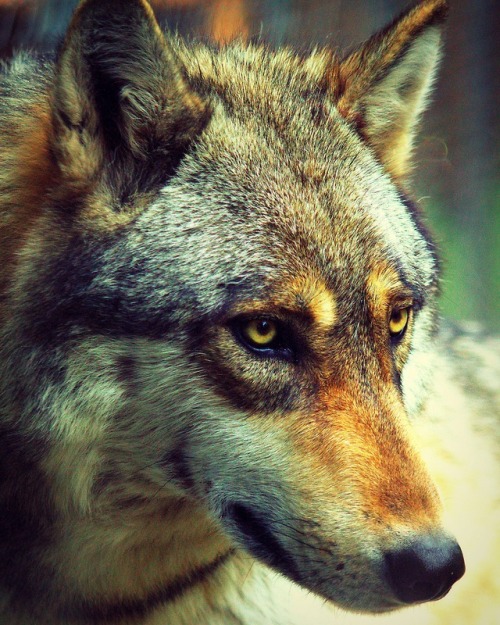Wolvens
Everything about these creatures is a crude mimicry of mankind. Their bodies are strange but not without allegory, and likewise their means of living are strange but not without allegory. They clothe themselves in skins for want of fabrics, use copper for want of steel, keep elk for want of cattle, harvest from the forests for want of fields, and worship the earth for want of the true God. Truly, their ways are inferior in all respects, but are evidently more alike man than any other beast: so I deem, that theirs is the gap between man and beast.
Gregor of Marbury, Fas Divina Hominis
The wolven is the ruling creature of Wolvenland. Far more ancient than the race of men, these beasts have grown old with the earth itself. Theirs are the wild tangled forests that only they have the knowledge to put to use.
Females are known as wolfesses and males as wolfards.Basic Information
Anatomy
Large bipedal apex omnivores, standing from 6ft to 7ft: somewhat taller than men. They have long snouts, tall ears and are covered in fur, with variations between the different breeds. They are often described as 'wolflike' or 'foxlike'.
Limbs are a few inches longer than human limbs. They have rougher skin on their palms and forearms to assist with climbing, and can rotate their wrists and ankles further. Though their feet are as long as a man's, their toes make up a larger length, giving them excellent jumping capabilities and are able to safely fall further. They have short tails, falling to the knees. Having evolved as arboreal ambush-predators in the forests of the north, they are unable to sweat and have much less running stamina than men. Permanent dentition is 2.1.4.3; deciduous is 2.1.4.
Genetics and Reproduction
Wolvens live nearly twice as long as men, only becoming grey and elderly when reaching their 90s. They have a strict biological mating season for a few weeks at the beginning of summer. Wolvens are born at the beginning of spring the following year.
Ecology and Habitats
Wolvens are largely inseparable from the forest. They do not know how to subsist in open lands.
Dietary Needs and Habits
Wolvens are omnivorous. While their wild diet is that of a hunter-gatherer, many other ways of subsistence have been developed, such as hidge-herding or root-crop cultivation, which can be annually shifting or intensive and sedentary using composting techniques.
Biological Cycle
Native to the northern forests, wolvens are highly attuned to the seasons. Their fur coat thickens for winter and thins for summer, with shedding taking place in spring.
Additional Information
Perception and Sensory Capabilities
Excellent climbing and balancing skills, and have a much better sense of smell than men.
Their eyes are spaced double the distance apart, giving superior depth perception and a wider field of view.
It is said that they have a much stronger sense of patience than men, and that their rage is one that broils quietly, though is no less deadly.
Remove these ads. Join the Worldbuilders Guild









Comments